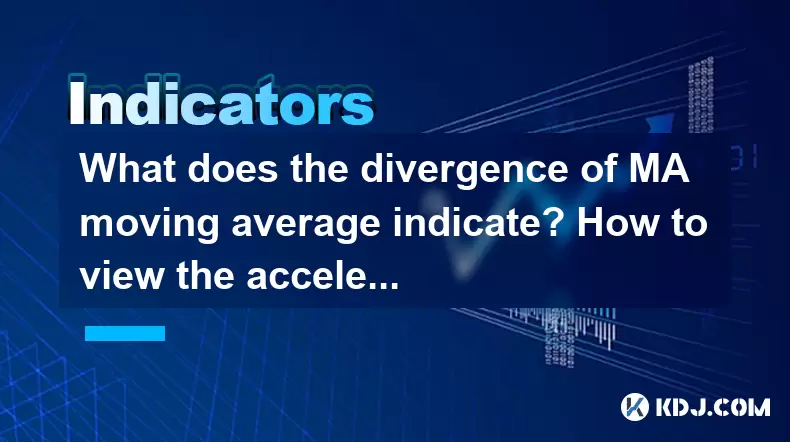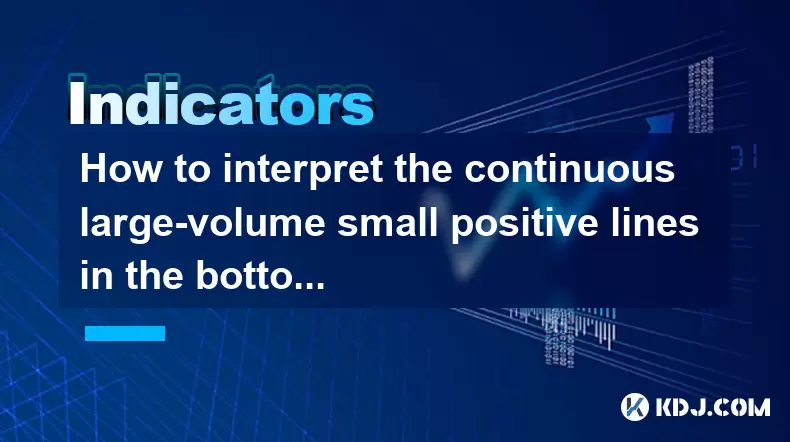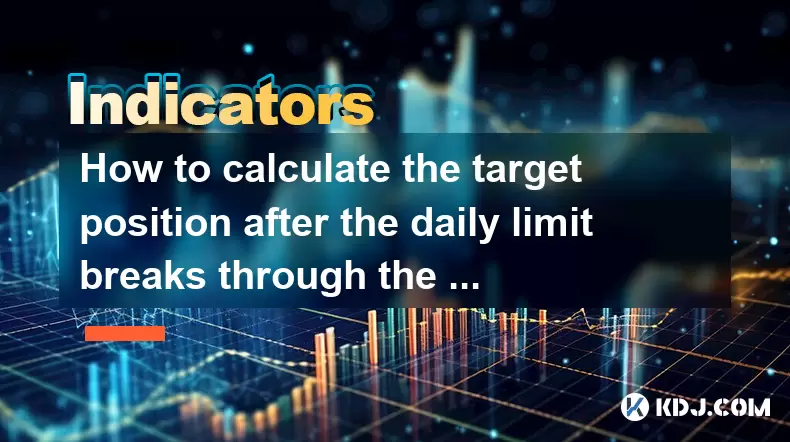-
 Bitcoin
Bitcoin $101,898.5005
-0.75% -
 Ethereum
Ethereum $2,258.1125
-1.07% -
 Tether USDt
Tether USDt $1.0004
0.01% -
 XRP
XRP $2.0178
-2.93% -
 BNB
BNB $624.0243
-1.53% -
 Solana
Solana $134.3298
-0.90% -
 USDC
USDC $0.9999
0.01% -
 TRON
TRON $0.2675
-2.05% -
 Dogecoin
Dogecoin $0.1538
-1.96% -
 Cardano
Cardano $0.5482
-1.11% -
 Hyperliquid
Hyperliquid $35.5636
5.45% -
 Bitcoin Cash
Bitcoin Cash $453.4902
-1.66% -
 Sui
Sui $2.5134
-2.97% -
 UNUS SED LEO
UNUS SED LEO $9.1292
1.77% -
 Chainlink
Chainlink $11.8457
-1.60% -
 Stellar
Stellar $0.2312
-2.73% -
 Avalanche
Avalanche $16.9721
0.29% -
 Toncoin
Toncoin $2.7549
-3.82% -
 Shiba Inu
Shiba Inu $0.0...01081
-1.10% -
 Litecoin
Litecoin $80.8250
-0.71% -
 Hedera
Hedera $0.1374
0.21% -
 Monero
Monero $305.4827
-2.36% -
 Ethena USDe
Ethena USDe $1.0006
0.00% -
 Dai
Dai $1.0000
-0.01% -
 Polkadot
Polkadot $3.2085
-3.12% -
 Bitget Token
Bitget Token $4.0845
-3.13% -
 Uniswap
Uniswap $6.3353
-1.63% -
 Pi
Pi $0.5085
-0.70% -
 Pepe
Pepe $0.0...08913
-3.82% -
 Aave
Aave $232.7090
-0.58%
What does the divergence of MA moving average indicate? How to view the acceleration of the market?
Divergence in MA helps crypto traders spot trend weakening and potential reversals, while acceleration indicators like MACD and ROC confirm market momentum shifts.
May 24, 2025 at 03:15 am

The divergence of the Moving Average (MA) is a crucial technical analysis tool used by cryptocurrency traders to understand market trends and potential reversals. Divergence occurs when the price of a cryptocurrency moves in the opposite direction of a technical indicator, such as an MA. This phenomenon can signal a weakening trend and a possible upcoming reversal. In the context of MA, divergence can be observed by comparing the price action with different time periods of moving averages, such as the 50-day MA and the 200-day MA.
To identify divergence, traders typically look for situations where the price of a cryptocurrency reaches a new high or low, but the MA does not follow suit. Bullish divergence happens when the price records a lower low while the MA records a higher low, suggesting that the downward momentum is weakening and a potential upward reversal might be imminent. Conversely, bearish divergence occurs when the price reaches a higher high while the MA reaches a lower high, indicating that the upward momentum is fading and a downward reversal could be on the horizon.
Types of Moving Averages and Their Divergence
There are several types of moving averages used in cryptocurrency trading, and each can show divergence in different ways. The Simple Moving Average (SMA) calculates the average price over a specific period, providing a smooth line that reflects the general trend. Exponential Moving Average (EMA) places more weight on recent prices, making it more responsive to new information. Both SMA and EMA can exhibit divergence, but EMA is often preferred for its sensitivity to recent price changes.
Divergence can also be observed using multiple moving averages. For instance, traders might use a combination of short-term and long-term MAs, such as the 50-day and 200-day MAs, to identify divergence. When the short-term MA crosses above the long-term MA (a golden cross), it may indicate a bullish divergence if the price has not yet reached a new high. Similarly, a death cross, where the short-term MA crosses below the long-term MA, could signal a bearish divergence if the price has not yet reached a new low.
Analyzing Divergence in Different Market Conditions
The effectiveness of divergence signals can vary depending on the market conditions. In a strong trending market, divergence signals might be less reliable as the price momentum can overpower the signals from the MA. However, in a ranging or consolidating market, divergence can be a powerful tool for identifying potential breakouts or breakdowns.
To analyze divergence effectively, traders should consider the overall market context. For example, if the market is in a prolonged uptrend and a bearish divergence appears on the MA, it might not necessarily indicate an immediate reversal. Instead, it could signal a temporary pullback within the broader uptrend. Conversely, in a downtrend, a bullish divergence might suggest a potential relief rally rather than a complete trend reversal.
Viewing the Acceleration of the Market
The acceleration of the market refers to the rate at which the price of a cryptocurrency is changing. To view market acceleration, traders often use technical indicators that measure momentum and rate of change. The Moving Average Convergence Divergence (MACD) is a popular indicator that helps traders assess market acceleration by comparing two moving averages.
To view market acceleration using MACD, follow these steps:
- Select the MACD indicator: Most trading platforms have MACD as a built-in indicator. You can find it in the indicator menu and apply it to your chart.
- Observe the MACD line and signal line: The MACD line is the difference between the 12-day EMA and the 26-day EMA. The signal line is typically a 9-day EMA of the MACD line. When the MACD line crosses above the signal line, it indicates increasing bullish momentum, and when it crosses below, it suggests increasing bearish momentum.
- Monitor the histogram: The MACD histogram represents the difference between the MACD line and the signal line. An increasing histogram indicates accelerating momentum in the direction of the trend, while a decreasing histogram suggests decelerating momentum.
Another tool for viewing market acceleration is the Rate of Change (ROC) indicator. The ROC measures the percentage change in price over a specified period, providing a clear view of how quickly the price is moving. To use the ROC:
- Apply the ROC indicator: Add the ROC to your chart, typically found in the indicator menu of your trading platform.
- Analyze the ROC values: Positive ROC values indicate that the price is rising at an accelerating rate, while negative values suggest that the price is falling at an accelerating rate. The steeper the ROC line, the faster the acceleration.
Combining Divergence and Market Acceleration
For a comprehensive analysis of the market, traders often combine the concepts of divergence and market acceleration. By observing divergence in the MA alongside indicators of market acceleration like MACD and ROC, traders can gain a deeper understanding of the market's underlying dynamics.
For example, if a bullish divergence is observed in the MA and the MACD histogram is increasing, it could indicate a strong potential for an upcoming upward move. Conversely, a bearish divergence in the MA coupled with a decreasing MACD histogram might signal an impending downward move. By integrating these signals, traders can make more informed decisions about entry and exit points.
Practical Application of Divergence and Acceleration
To apply these concepts in real trading scenarios, consider the following steps:
- Identify the trend: Use longer-term MAs, such as the 200-day MA, to determine the overall market trend.
- Look for divergence: Compare the price action with shorter-term MAs, such as the 50-day MA, to spot potential divergences.
- Confirm with acceleration indicators: Use MACD and ROC to confirm the strength of the divergence signal. An increasing MACD histogram or a steep ROC line can validate the divergence signal.
- Set entry and exit points: Based on the combined analysis, set appropriate entry and exit points for your trades. For instance, enter a long position when a bullish divergence is confirmed by increasing market acceleration, and exit when the divergence signal weakens or reverses.
Frequently Asked Questions
Q: Can divergence signals be used in all types of cryptocurrencies?
A: Divergence signals can be applied to all types of cryptocurrencies, but their effectiveness may vary depending on the liquidity and volatility of the specific cryptocurrency. More liquid and less volatile cryptocurrencies tend to produce more reliable divergence signals.
Q: How often should I check for divergence and market acceleration?
A: The frequency of checking for divergence and market acceleration depends on your trading style. For day traders, checking these indicators multiple times throughout the day is common, while swing traders might check them less frequently, such as daily or weekly.
Q: Are there any other indicators that can complement MA divergence and market acceleration analysis?
A: Yes, other indicators that can complement MA divergence and market acceleration analysis include the Relative Strength Index (RSI), Bollinger Bands, and the Average Directional Index (ADX). These indicators can provide additional insights into market momentum and volatility.
Q: Can divergence and acceleration signals be used for both short-term and long-term trading?
A: Yes, divergence and acceleration signals can be used for both short-term and long-term trading. Short-term traders might focus on shorter time frames and more sensitive indicators, while long-term traders could use longer time frames and less sensitive indicators to identify trends and potential reversals.
Disclaimer:info@kdj.com
The information provided is not trading advice. kdj.com does not assume any responsibility for any investments made based on the information provided in this article. Cryptocurrencies are highly volatile and it is highly recommended that you invest with caution after thorough research!
If you believe that the content used on this website infringes your copyright, please contact us immediately (info@kdj.com) and we will delete it promptly.
- XRP Rally Meets Neo Pepe Presale: A Meme Coin Revolution?
- 2025-06-23 17:05:13
- Coin-Op Comeback: Arcade Bars, Stern, and a Director's New Venture
- 2025-06-23 16:45:12
- XRP in Japan: From Community Day Tacos to Payment Sector Transformation
- 2025-06-23 17:05:13
- LILPEPE Presale Frenzy: The Meme Coin Revolution is Here, Ya'll!
- 2025-06-23 16:45:12
- Bitcoin Crash Incoming? Kiyosaki Bets Big on Silver Amidst Global Uncertainty
- 2025-06-23 17:25:11
- Dogecoin, Meme Coins, Price Prediction: Riding the Bullish Wave?
- 2025-06-23 17:25:11
Related knowledge

Is the high opening and low closing and huge volume the next day a trap for more?
Jun 23,2025 at 05:07pm
Understanding High Opening and Low Closing with Huge VolumeWhen traders observe a high opening followed by a low closing and massive volume the next day, it often raises concerns about whether this is a trap set by larger players in the market. This pattern typically indicates strong volatility within a short period, which can confuse retail investors. ...

How to interpret the MACD's second golden cross on the water but insufficient volume?
Jun 23,2025 at 05:01pm
Understanding the MACD Indicator and Its SignificanceThe Moving Average Convergence Divergence (MACD) is a widely used technical analysis tool in cryptocurrency trading. It helps traders identify potential buy or sell signals by showing the relationship between two moving averages of an asset’s price. The MACD line, signal line, and histogram are the th...

How much volume is required for the W-bottom to break through the neckline of the time-sharing chart?
Jun 23,2025 at 04:21pm
Understanding the W-Bottom Pattern in Cryptocurrency TradingThe W-bottom pattern is a popular technical analysis formation used by traders to identify potential bullish reversals. It typically appears at the end of a downtrend and resembles the letter 'W' on price charts. In the context of cryptocurrency trading, where volatility is high and trends shif...

How to interpret the continuous large-volume small positive lines in the bottom area?
Jun 23,2025 at 04:43pm
Understanding the Basics of 'Large-Volume Small Positive Lines'In technical analysis, especially within the cryptocurrency market, the pattern known as 'large-volume small positive lines' refers to a scenario where the price increases slightly (small positive candlestick) but is accompanied by unusually high trading volume. This phenomenon typically occ...

How to read the sideways consolidation after the bottom volume and long positive line?
Jun 23,2025 at 02:28pm
Understanding the Sideways ConsolidationWhen analyzing cryptocurrency charts, sidewards consolidation refers to a phase where prices move within a narrow range without a clear upward or downward trend. This pattern often appears after significant price movements, such as a sharp increase followed by a period of equilibrium between buyers and sellers. In...

How to calculate the target position after the daily limit breaks through the previous high?
Jun 23,2025 at 02:57pm
Understanding the Daily Limit BreakthroughIn cryptocurrency trading, a daily limit typically refers to the maximum price movement allowed within a single trading day on certain exchanges. When this limit is breached, especially when it surpasses the previous high, traders often seek to calculate the target position or expected price movement following s...

Is the high opening and low closing and huge volume the next day a trap for more?
Jun 23,2025 at 05:07pm
Understanding High Opening and Low Closing with Huge VolumeWhen traders observe a high opening followed by a low closing and massive volume the next day, it often raises concerns about whether this is a trap set by larger players in the market. This pattern typically indicates strong volatility within a short period, which can confuse retail investors. ...

How to interpret the MACD's second golden cross on the water but insufficient volume?
Jun 23,2025 at 05:01pm
Understanding the MACD Indicator and Its SignificanceThe Moving Average Convergence Divergence (MACD) is a widely used technical analysis tool in cryptocurrency trading. It helps traders identify potential buy or sell signals by showing the relationship between two moving averages of an asset’s price. The MACD line, signal line, and histogram are the th...

How much volume is required for the W-bottom to break through the neckline of the time-sharing chart?
Jun 23,2025 at 04:21pm
Understanding the W-Bottom Pattern in Cryptocurrency TradingThe W-bottom pattern is a popular technical analysis formation used by traders to identify potential bullish reversals. It typically appears at the end of a downtrend and resembles the letter 'W' on price charts. In the context of cryptocurrency trading, where volatility is high and trends shif...

How to interpret the continuous large-volume small positive lines in the bottom area?
Jun 23,2025 at 04:43pm
Understanding the Basics of 'Large-Volume Small Positive Lines'In technical analysis, especially within the cryptocurrency market, the pattern known as 'large-volume small positive lines' refers to a scenario where the price increases slightly (small positive candlestick) but is accompanied by unusually high trading volume. This phenomenon typically occ...

How to read the sideways consolidation after the bottom volume and long positive line?
Jun 23,2025 at 02:28pm
Understanding the Sideways ConsolidationWhen analyzing cryptocurrency charts, sidewards consolidation refers to a phase where prices move within a narrow range without a clear upward or downward trend. This pattern often appears after significant price movements, such as a sharp increase followed by a period of equilibrium between buyers and sellers. In...

How to calculate the target position after the daily limit breaks through the previous high?
Jun 23,2025 at 02:57pm
Understanding the Daily Limit BreakthroughIn cryptocurrency trading, a daily limit typically refers to the maximum price movement allowed within a single trading day on certain exchanges. When this limit is breached, especially when it surpasses the previous high, traders often seek to calculate the target position or expected price movement following s...
See all articles
























































































